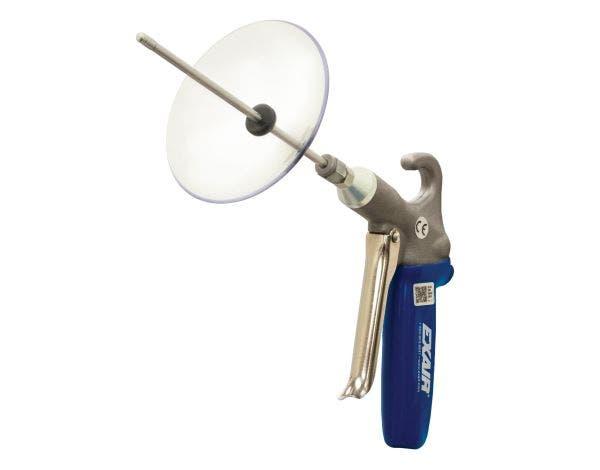Table of Contents
- Understanding the Causes and Risks of Blowback and Wind in Spraying
- Selecting the Right Equipment to Minimize Drift and Enhance Precision
- Techniques for Adjusting Spray Patterns and Timing to Combat Wind Effects
- Safety Practices and Personal Protective Measures During Windy Conditions
- Final Thoughts
Understanding the Causes and Risks of Blowback and Wind in Spraying
When applying sprays, blowback and wind drift pose significant challenges that can compromise both effectiveness and safety. Blowback occurs when sprayed particles bounce off a surface and return toward the applicator, while wind can carry chemicals beyond the intended target area. Factors such as droplet size, spray pressure, and nozzle type directly influence the likelihood of these issues. Additionally, environmental conditions like sudden gusts or consistent breezes increase the risk of unintended exposure and off-target contamination.
To minimize these risks, it’s essential to understand that not all spray settings and tools are created equal. Using finer droplets may improve coverage but also elevate drift potential, while coarser droplets reduce drift but might impact spray uniformity. Additionally, timing your spray operations during periods of low wind speeds or early mornings when air movement is minimal can drastically reduce both blowback and wind interference. Consider these best practices for safer applications:
- Choose the right nozzle for the application to control droplet size effectively.
- Adjust spray pressure to balance coverage and reduce excess atomization.
- Monitor weather conditions closely before and during spraying to avoid high-wind periods.
- Employ spray shields or drift-reduction technology when working in windy environments.
Selecting the Right Equipment to Minimize Drift and Enhance Precision
Choosing the ideal spraying equipment is crucial for reducing the risk of drift and ensuring accurate application. Prioritize nozzles designed to produce larger, uniform droplets, as they are less likely to be carried away by wind or evaporation. Consider using air-induction or low-drift nozzles, which create larger droplets without compromising coverage. Additionally, selecting sprayers with adjustable pressure settings allows you to fine-tune droplet size based on environmental conditions, ensuring greater precision. Don’t overlook the importance of regularly servicing and calibrating your equipment to maintain optimal performance-poorly maintained gear can exacerbate drift issues and reduce efficiency.
Several key equipment features can significantly impact your spraying accuracy and safety:
- Drift-Reduction Technologies: Tools like air-assisted sprayers help break up spray patterns and reduce airborne particles.
- Wind Speed Sensors: Integration of sensors can help you monitor real-time conditions, prompting adjustments in spraying operations to avoid high-wind periods.
- Precision Targeting Controls: GPS-guided systems enhance application accuracy by precisely managing spray placement.
- Shielded Sprayers: Physical barriers minimize off-target spray, protecting vulnerable areas from drift impact.
Selecting equipment with these features will not only protect the environment and neighboring crops but also maximize your product’s effectiveness, saving time and costs in the long run.
Techniques for Adjusting Spray Patterns and Timing to Combat Wind Effects
Achieving precise spray application under windy conditions demands mastery over both spray patterns and timing. Opt for nozzles with adjustable fan angles to fine-tune your coverage area – a narrower spray pattern reduces drift by concentrating the spray closer to the target. Additionally, utilizing low-pressure settings can minimize the formation of fine droplets that easily catch the wind. Remember, larger droplets are less vulnerable to wind displacement, ensuring that more product reaches the intended surface.
Timing your spraying activities to coincide with calmer parts of the day significantly improves effectiveness. Early mornings and late evenings typically exhibit lower wind speeds, making them ideal windows for application. To further enhance control, consider using drift-reducing adjuvants and stay informed about local weather forecasts. Combining these strategies not only maximizes product efficiency but also helps protect surrounding areas from unintended exposure.
- Choose nozzles with adjustable spray widths to match current wind conditions.
- Lower spray pressure to produce coarser droplets less prone to drift.
- Schedule spraying during early morning or late evening when winds are calmer.
- Incorporate drift-reducing agents to improve application accuracy.
Safety Practices and Personal Protective Measures During Windy Conditions
When working in windy conditions, prioritizing safety is essential to prevent harmful exposure and unintended spray drift. Always equip yourself with high-quality personal protective equipment (PPE) to create a reliable barrier between you and airborne chemicals. This should include a respirator mask designed for pesticide use, chemical-resistant gloves, long-sleeved clothing, and protective eyewear. Additionally, consider wearing a windproof outer layer to reduce the impact of gusts and minimize contact with sprayed particles. Regularly inspect and maintain your PPE to ensure there are no defects or wear that could compromise your safety during application.
Strategically managing your spray tactics can significantly reduce risks on windy days. Always aim to spray when wind speeds are low and stable-typically less than 10 mph-to control the direction and spread of blowback. If conditions are unavoidable, opt for low-pressure spraying and nozzle types specifically designed to minimize drift. Employing shielded or directed spraying equipment can also protect both you and the environment by targeting the application area precisely. Lastly, remain vigilant, keeping an eye on changing wind patterns throughout your work to halt spraying immediately if gusts intensify or shift direction unexpectedly.
Final Thoughts
Managing blowback and wind when spraying is essential not only for the effectiveness of your application but also for ensuring safety and protecting the environment. By following the tips outlined above-such as monitoring weather conditions, using proper equipment, and adopting thoughtful spraying techniques-you can minimize drift and reduce risks. Remember, a careful approach not only safeguards your crops but also demonstrates responsible stewardship. Stay informed, stay prepared, and spray smart for the best results every time.Check Our Other Blogs
- StunGun – Your Trusted Source for Stun Guns, Laws, and Self-Defense Tips
- PepperSprayLaws – Your Trusted Resource for Pepper Spray Information
- StunGunLaws – Your Trusted Guide to Stun Gun Legality and Safety




